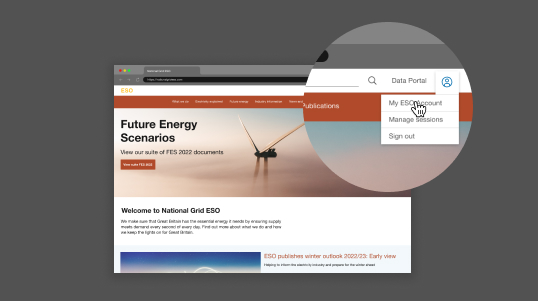Our Innovation Strategy is developed using feedback from across industry and ESO subject matter experts.
It has been informed by other ESO strategies such as the ESO Digitalisation Strategy & Action Plan and Operability Strategy, as well as changing energy system dynamics from the macro trends of Decarbonisation, Decentralisation, Digitalisation and Democratisation.
It sets out how we need to innovate in 2024-25 and where to focus our efforts to drive the decarbonisation agenda for Great Britain.
Given our uniquely central position, we aim to facilitate innovation across the whole energy system. We know innovators outside our organisation will be leading the effort to solve the toughest problems we face as an industry, which is why we are here to work together to enable change.
ESO Innovation Strategy report
View our refreshed ESO Innovation Strategy document which sets out our innovation priorities for 2024-25. We also have a printable version available for download.
Innovation Strategy 2024/25
Our innovation priorities for 2024-25
Find out about the innovation priorities included in our 2024-25 Innovation Strategy. The report provides an overview of each innovation priority, including:
- Introduction to the innovation priority
- Key opportunities to be explored
- Relevant ESO publications and example projects
Exploring better forecasting of supply and demand through application of transformational technologies such as AI to enable increased integration of renewables and reduce balancing costs. Collaboration is required to monitor carbon more accurately across the energy system to inform decisions on optimal routes to net zero.
Whole Energy System
Understanding how multiple energy vectors can be co-optimised to enable the decarbonisation of different sectors (heat, power, transport and industry) while maintaining a secure and resilient energy system.
Digital, AI and Data
Driving towards digitalisation and implementation of AI to enable more efficient operations including faster and more informed decision making, automation of processes and better user experiences. Digital, AI and Data are enablers to address the challenges of our other innovation priorities. This is reflected across our innovation portfolio. For example, tools like the Dynamic Reserve Setting (DRS)model and the ambitious Advanced Dispatch Optimiser (ADO) project leverage AI to empower our control room with unprecedented levels of insight.
We will lead the transformation to a fully integrated, whole energy system that is cyber-secure.
Future Markets
Designing and testing market reforms to facilitate the net zero transition at lowest cost. We’ll do this with coherence of markets and removal of barriers to enable diversity of market actors.
Constraint Management
Testing a variety of innovative, market-led solutions and technologies to identify the most economic solutions to mitigate constraints and reduce costs for consumers. Opportunities also remain to better forecast the occurrence of constraints, including the cost impacts.
System Stability and Resilience
Improving our understanding of how and why the system may be impacted by different factors and how to mitigate against them, while operating a system with increasing non-synchronous generation.

